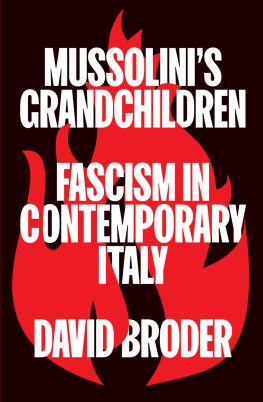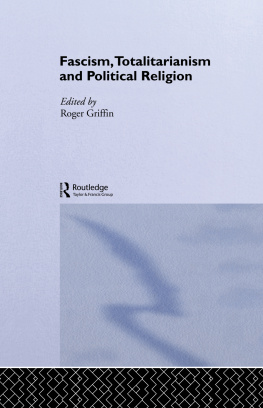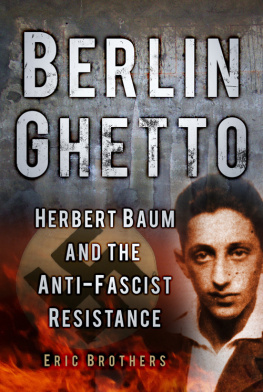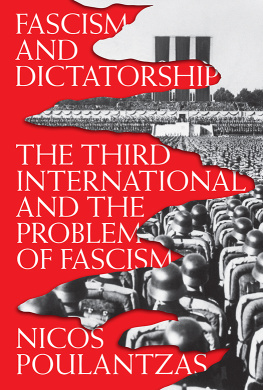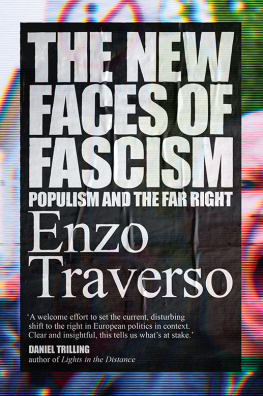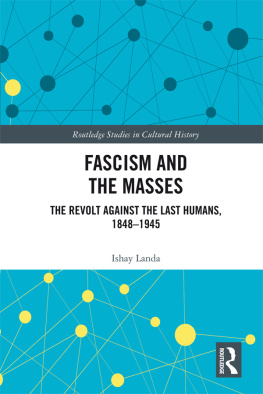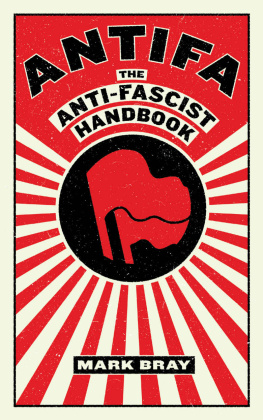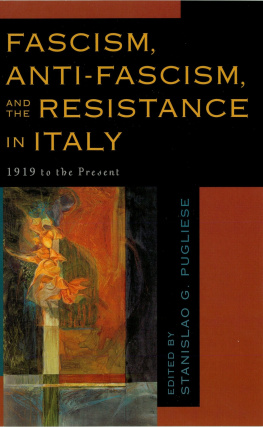Contents
The Shock Of Recognition:
Looking at Hamerquists Fascism & Anti-Fascism
Confronting Fascism
Discussion Documents For A Militant Movement
Don Hamerquist, J. Sakai, Anti-Racist Action Chicago, Mark Salotte
Confronting Fascism: Discussion Documents for a Militant Movement
ISBN 978-1-894946-54-4
Paperback edition published 2002
FIRST KINDLE EDITION 2013
Kersplebedeb Publishing
CP 63560
CCCP Van Horne
Montreal, Quebec
Canada
H3W 3H8
www.kersplebedeb.com
If you found the ideas is this book interesting, you may also find the Three Way Fight blog of use.
Introduction
by Xtn of Chicago ARA
For North American radicals the change of the century was marked not by New Years Eve celebrations but in fireworks of a totally different kindN30 (Nov. 30, 1999, in Seattle) and 9/11 (Sept. 11, 2001, in D.C. and New York). The first opened up an entire range of new and energizing possibilities. It heralded in an era of mass street protest unseen by most of us. It exposed the weakness of capitalist power and hegemony and was enough to make us feel that anything was possible. The second brought entirely new elements into the picture. We were not the only enemy of the capitalist order, and this new enemy was no friend of liberation. Post-Seattle, the new street protest movement developed and even accelerated at a pace that politicized thousandsbut there were growing problems. With 9/11 the Seattle spirit melted into confusion and disarray.
Out of this energy and confusion comes this little book. Its an attempt to look at this new era of political action and thought, focusing on an area that we see as extremely important, relevant and perhaps at the core to whats in the air todayfascism. You are holding in your hands our attempt to begin a different and more serious discussion of fascism, what is it, of the relationship of fascism to capitalism, and of the elements of a strategy with the potential to defeat both. The essays presented here should be taken as part of an ongoing, evolving talk within the movementwith the emphasis on ongoing. Unlike many publications and political statements that try to be the authoritative final word on the subject, the documents here are meant to raise more questions than they necessarily answer. Theyre about jump-starting our minds and removing any blinders, allowing us to see things as we havent seen them before.
For us, the most important aspect of these essays is that they take fascism seriously as a force/ideology/movement/tendency. They point out that fascism isnt just connected to dusty history books in the back of the university library but that it is present in some of the most important events in political history, both in the past and in whats going on today.
The actual genesis of these essays lies in the period right before N30. Anti-fascist activity was heating up in the U.S. Midwest, directed primarily against the neo-nazi organization called the World Church of Creator (WCOTC). As the actions intensified, questions started emergingas did differences. A Chicago, Illinois, chapter of Anti-Racist Action (ARA) had initiated a campaign to shut down a series of public meetings planned by WCOTC leader Matt Hale. The campaign started by ARA eventually made it difficult and even impossible for Hale and his organization to rally, let alone go out in public, without a challengepolitically as well as physically.
During this time, the Battle of Seattle grabbed everyones attention and made us sit up. Images of thousands of protesters clogging the streets of downtown Seattle were broadcast on every television across the worldso too were scenes of the Black Bloc and the attacks on capitalist property and police. Newspapers were scrambling for info on the new street militants and their ideology of anarchism. And debate started to rage in the radical press. The Black Bloc was seen by some as wrong-headed youth interested only in adventurism. Sometimes the Black Bloc was condemned outright and treated as criminalan attitude that rolled in from the established Left. During the riots, liberal and leftist do-gooders actually tried to defend capitalist property from the anarchists. In several instances, avowed pacifists attacked the Black Bloc in an effort to protect places like the Gap and Starbucks.
The actions by the Black Bloc and anarchists turned traditional politics on its head. This black-clad voice in the protest movement wasnt content to beg the politicians and capitalists for reforms. The Black Bloc symbolized a new generation of activists wanting nothing short of revolution.
The ranks of the Black Bloc were comprised of many activists who had actually cut their teeth fighting nazis and Klan groups. ARA groups quickly defended the Seattle Black Bloc, seeing a similarity in tactics and motivationand also in the way that militant antifascism had suffered from denunciations by the established left and liberal reformists. It was important for us to acknowledge and embrace this break with past thinking and action. But ARA activists were also becoming aware of other tendencies riding on the waves of the protests.
Anti-globalization was an amorphous concept that was defined at its lowest denominator as a mass challenge to the control and influence of international corporations. This movement was a political free-for-all that gave room to a wide range of ideological tendencies from left to rightincluding fascists. As the Seattle streets were lighting up in the flames of protest, just an hour to the north Matt Hale was visiting Washington State to participate in a remembrance ceremony for Robert Matthews, the slain leader of the neo-nazi paramilitary organization, the Order. Hale praised the demonstrations in Seattle and in particular hailed the young rioters as heroes. He chastised the right-wing establishment for being do-nothings and reformist and said that the fascist movement could take lessons from the militant tactics of the demonstrators and Black Bloc. The anti-fascist and anarchist movement now saw that this anti-globalization movement was not a single homogenous block. It was not only the reformist left and its ultimate subservience to the state that had to be challengedthe racist and fascist elements that would continue to insert themselves into the mix had to be exposed and beat back.
From N30 onward, global protest politics were characterized by a willingness to fight back and break the law. Even more passive, non-violent demonstrators showed an unprecedented determination in disrupting the capitalist machine. Everywhere, from the big cities to little country towns, radical anti-capitalist and anarchist actions, graffiti and groups started to emerge. For those who couldnt be in Seattle, the next big demo was prioritized. The spirit of revolt was catching everyone.
This vibe of uncompromising protest, and the awareness of a growing and vocal nazi movement, only helped to encourage anti-fascist organizing. The WCOTC, one of the fastest growing and most dynamic of nazi groups, was facing opposition everywhere it tried to rally. From Indiana to New England to Hales hometown of Peoria, Illinois, antifa were throwing up resistance. (One time, sitting at a bar, a bunch of Midwestern antifa looked up to see hand-to-hand streetfighting between anarchist anti-racists and nazis after a WCOTC rally in Wallingford, Connecticut, courtesy of CNN.) But the increase in activityboth anti-fascist and anti-capitalistdidnt come without growing problems. An increase in state surveillance and repression coincided with the growth of the new movement. Antifa also faced the always-present risk of fascist counter-attacks.
At the same time, various radicals started asking whether anti-fascist organizing should be a priority for placing our energies. What was to be gained by doing anti-fascist work? Do groups like the ARA see more of a threat in nazis than what really exists? These questions demanded answers, which helped antifa to clarify our motivations and positions and provided us with a platform to argue out why we do what we do.
Next page


